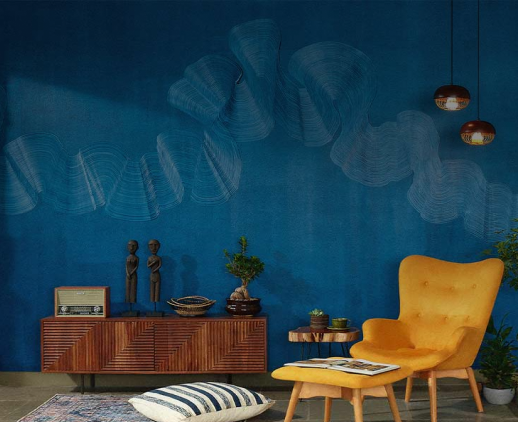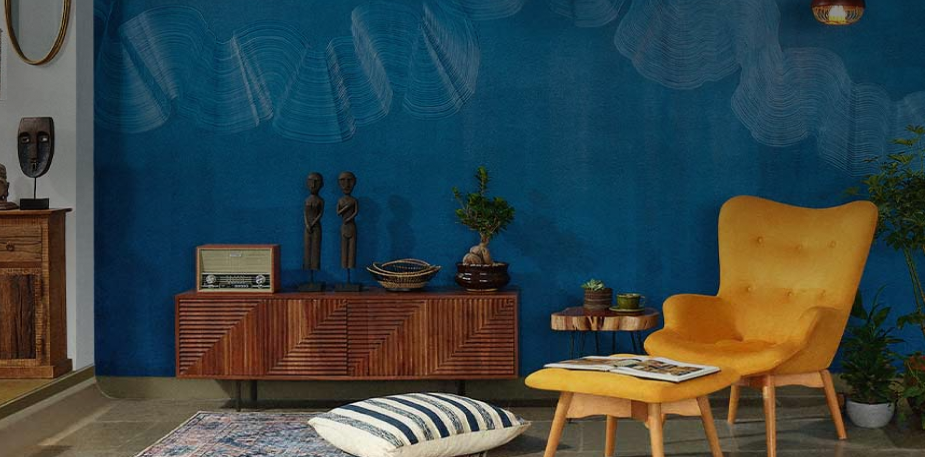Get your home interior design budget estimate
Tour Shivani Dogra’s dream studio in an old Goan home

The interior designer started a new studio in Goa last year and realised the joys and pains of living and working in a heritage home
Delhi-based interior designer Shivani Dogra had never been to Goa in her life. Until last year, that is. And the first time she stepped foot in north Goa in 2021, it was to sign the deed to lease a house that she finalised from Delhi after viewing some grainy photos of it taken by her mother. This traditional Goan house would be her design studio in this brand new city. “I have always wanted to have a studio in an old house. Now where that would be, I didn't really have a clear picture of. The old houses I had mostly been exposed to were colonial houses. I had collected pieces over the years and always thought that I would use the teak furniture that I already had stowed away. But this is my first experience of a Goan house and when I saw it I realised immediately that the style of pieces I had was very different from the style of this house. So I picked up some stuff from the markets in Goa, added a few of my older pieces, some plants and sort of achieved a happy balance,” she says.
As a Goa newbie she didn’t expect the issues the heavy monsoon would bring with it. But now having spent some time repairing the roof, the structure and doing up the interiors for her home, Shivani is starting to feel at home in her studio. What makes that easier is also the inviting bedroom, which she uses when she is in the city. The dining area, with the most amount of sunlight, serves as the workstation for her team. We spoke to the designer about what it takes to convert an old Goan home into a work studio. Edited excerpts:
Beautiful Homes: Firstly, what made you think of having a studio in Goa?
Shivani Dogra: My decision to move to Goa was organic. I like exploring new places, we had a client here and I decided it might be good to have a studio in another place besides Delhi. Once I found the house I thought it was a good opportunity to do it up and start a studio from here. Goa has great opportunity and potential for interior designers. I like the vibe, there are a lot of creative people here and many heritage older houses.
BH: What inspired the style and décor of the space after you decided to move in?
SD: I love that this house is exactly what I had imagined using as a studio. I love the bones, the large doors, and the area it is in—the colony, as we say in Delhi. There are old houses all around me. It is large but not enormous, and I could do it up with the furniture that I already had in my Delhi studio. The dining area is my favorite area of this house because it has the most amount of natural sunlight, it’s breezy, and I saw so much potential in it. It really inspired me to think of colour for the space and how the rest of the space was going to grow. And I say this because it wasn't as large and intimidating as the living room space. I love the low windows overlooking the garden. I have more privacy in that room and it's a great place to work in, to have my evening meals, to sit with friends or my team around the table.

The living room has pieces of furniture from all over—Delhi, Calcutta, Goa, Mussoorie and Chettinad. The green doors and white walls replaced the original yellow walls and brown doors.
I landed in Goa in June when it was really humid and I thought that I would like to keep my studio as airy as possible and then use a lot of whites and creams and greens and not do too much beyond that. Now when I sit there at my table working with breeze flowing in, it feels very relaxing and cool.

This is where Shivani works when in Goa. The desk is an old partnership desk from Calcutta that's traveled with her through many cities. The bookcase is also from Calcutta. The chair is from Australia and the desk in the corner is from her grandmother's home in Delhi. The windows overlook a Chikoo tree and her neighbour’s garden.
BH: Tell us about your own office space.
SD: The room where I have my office was originally a bedroom. I just needed one bedroom because this was going to function as a studio. The really large desk that I have here is actually a desk I used in my Delhi office, an old desk from Calcutta. Right next to this is this bookshelf, which has all my files and books for work. We've got another old desk, a small desk on the side, which is something I've owned for the past 10 years again and comes from my grandmother. There's a bed that faces the old desk, which was here already. There was a lot of furniture that was in this house, much of which I gave back to the landlord. The room now feels much more grounded to me—a part of who I am, so I don't feel completely alien. I didn't want to make this a house that I'm not comfortable in or doesn't reflect the kind of work that we do. I’m from all over and this house is made up of pieces that are from all over.
BH: How is your move into this studio inspiring your work and life?
SD: I love this house, although the first few months weren't comfortable. Moving here over the monsoon was something that made me rethink whether I wanted to stay in an old house in Goa, whether I still wanted to buy an old house because it's always been a dream of mine. But this house has shown me what can go wrong with an old house, how you'd have to fix it in parts, how you have to take care of it. And I'm grateful for that. Because now having lived through the monsoon I do know that I still want an old house. If I moved into a new house in Goa I don't think I’d have been as inspired with work, to do it up the way I've done it up. At night, particularly, when the lights are low, and when Saligao is quiet, I can do my reading, listen to my music, and I love working late at night over here. I always wanted a space that inspired me. It's lovely in the day and actually quite nice in the monsoon when the roof is not leaking. It's a house that I'm slowly getting to know and fixing and learning to love. And I like my relationship with it because I think like any human relationship there's going to be bumps along the way. But that's what makes you more attached to someone, so I can say the same for the house. I've settled into it and as every month passes by, I grow more attached to it.

Get Started with your interior design journey with us!
Speak to our design professionals
What’s the status of your home possession?
What’s the condition of your home/space?
Will you be living in your space during the renovation?
 Previous Question
Previous Question
Is your interior design budget over 4 lakhs?
 Previous Question
Previous Question
Book next available appointment slots with our experts!
Please Select Date and Day
 Previous Question
Previous Question

Something went wrong!
We were unable to receive your details. Please try submitting them again.

Appointment Scheduled!
Thank you for giving an opportunity to Asian Paints Beautiful Homes Service! Our Customer Experience Specialist will get in touch with you soon.
Appointment Date & time
Thank You!
Our team will contact you for further details.
What’s the status of your home possession?
What’s the condition of your home/space?
Will you be living in your space during the renovation ?
 Previous Question
Previous Question
Is your interior design budget over 4 lakhs?
 Previous Question
Previous Question
Book next available appointment slots with our experts!
DEC 2023
Please Select Date and Day
 Previous Question
Previous Question

Something went wrong!
We were unable to receive your details. Please try submitting them again.

Appointment Scheduled!
Thank you for giving an opportunity to Asian Paints Beautiful Homes Service! Our Customer Experience Specialist will get in touch with you soon.
Appointment Date & time
17 Oct 23, 03.00PM - 04.00PM
















































